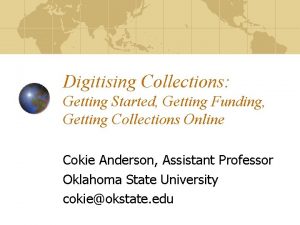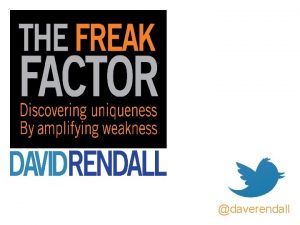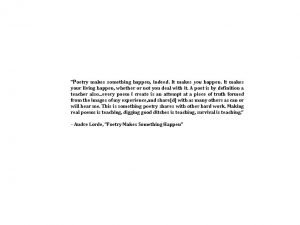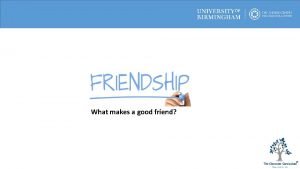GETTING THE STORY 1 What makes a story
















- Slides: 16

GETTING THE STORY 1. What makes a story? 2. How do you get the story?

What makes a story? 1. What your audience wants or needs to know. 2. News elements of timeliness, nearness, importance, conflict, human interest, uniqueness.

Whose the audience? 1. Students 2. Faculty and staff 3. Parents 4. People in the community

What are news elements? 1. 2. 3. 4. 5. 6. Timeliness Nearness Importance Conflict Human interest Uniqueness

Choose a story that your audience will want to read and that contains at least one new element.

But there is nothing to report… Check with administration 2. Check with clubs and teams 3. Check out classes 4. Check out events 5. Check out guidance 6. Check with coaches 7. Ask around among your friends 1.

There are no bad story ideas, only bad approaches

How do you get the story? Interviews

Top 6 reasons for bad interviews Person wouldn’t say anything. 2. I couldn’t find my questions. 3. I asked him/her to give me a quote, but he/she wouldn’t. 4. The person talked too fast. 5. There was no story. 6. I couldn’t think of anything to ask. 1.

How to get a good interview 1. Prepare for the interview…do your homework! 2. Be professional in the interview.

Prepare for the interview Know your angle, or at least what your editor thinks the angle is. 2. Research, research. 3. Find at least three people to interview, at least one from each group. 4. Prepare those questions, at least 20. 5. Make an appointment for the interview. 1.

Questions? ? ? ? ? 1. 2. Remember the 5 Ws and 1 H, especially the “Why” Avoid these kinds of questions a. Yes/No b. Leading questions c. General questions d. Think/Feel questions e. Two or Three part questions

Showtime – The Interview 1. 2. 3. 4. 5. Be prepared with paper, pens, pencils, tape recorder, batteries, and questions! Introduce yourself and your purpose. Confirm the spelling of interviewee’s name, job title and position. Ask permission to use the tape recorder, but take notes too. Ask your questions, but be flexible.

Maintain eye contact and give positive feedback (Um, uh-huh). 7. Make note of nonverbal communication (body language, gestures, pauses, facial expressions) 8. Always confirm statistics, dates, times, money, etc. and ask for clarification when needed. 9. Never hesitate to “read back” statement. 10. End with a thank you. 6.

Good interviews make GOOD STORIES!

 The secret of getting ahead is getting started
The secret of getting ahead is getting started Poe is a master at creating an eerie
Poe is a master at creating an eerie What makes a good story
What makes a good story Plot diagram example cinderella
Plot diagram example cinderella The setting of cinderella
The setting of cinderella Folktale stories for grade 7
Folktale stories for grade 7 Thế nào là số nguyên tố
Thế nào là số nguyên tố Phối cảnh
Phối cảnh đặc điểm cơ thể của người tối cổ
đặc điểm cơ thể của người tối cổ Tỉ lệ cơ thể trẻ em
Tỉ lệ cơ thể trẻ em Các châu lục và đại dương trên thế giới
Các châu lục và đại dương trên thế giới ưu thế lai là gì
ưu thế lai là gì Sơ đồ cơ thể người
Sơ đồ cơ thể người Môn thể thao bắt đầu bằng từ chạy
Môn thể thao bắt đầu bằng từ chạy Tư thế ngồi viết
Tư thế ngồi viết Cái miệng xinh xinh thế chỉ nói điều hay thôi
Cái miệng xinh xinh thế chỉ nói điều hay thôi Hình ảnh bộ gõ cơ thể búng tay
Hình ảnh bộ gõ cơ thể búng tay






























